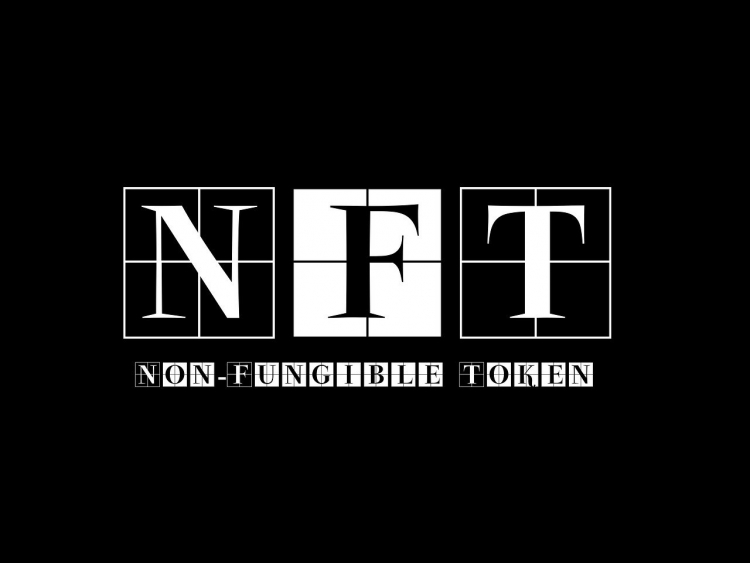Welcome to Digital Doomsday

Do you really know what an NFT is, because I didn’t before writing this. Even after doing some research, I think half of the people I know who claim they know a lot about crypto and NFTs don't know what they are even talking about.
To help you understand what an NFT is more clearly let's start off with the basics: What does NFT stand for?
It stands for Non-Fungible Token described as a piece of data that is stored on a database known as a blockchain. NFT’s are usually associated with digital files if they are in the form of photographs or videos. When someone buys an NFT they aren’t exactly buying the actual digital piece of art. In fact, they are buying an embedded contract or a link to it. Most of the time, the link will lead to a startup website that is destined to fail over the course of a few years and the original link to the digital piece of art will be lost.
NFTs were created with the intention of benefiting artists in receiving some sort of compensation for their work every time it is sold and appreciated in value. Personally, I believe that the value of the work is cared about a lot less on a digital platform rather than a more tangible piece of art that someone might hang up in their home or eventually see in a museum.
There are people who have invested thousands of dollars in cryptocurrency and want to cash out, but can’t. So with nowhere to go, they turn to investing all of their money into purchasing and selling digital art. These people do not care about what the art is or the meaning behind it, just that it is worth a lot on crypto and can benefit them later on when they want to sell it to someone who actually does care about the work.
Monetizing the art world is not helping anyone. It is devaluing art itself. It is taking away the appreciation for what art truly stands for and how it came to be. Many of my friends who are invested in cryptocurrency and believe that this is going to be the new way of life do not actually care about art. They do not care about what their NFTs are or the story behind the work or the artist, they are in it just to make a profit off it. NFTs are just another chapter in our profit driven society’s book of monetization and monopolization.
Not every artist has been transformed by the sudden uprise in crypto. Many people are concerned about the potential environmental consequences as well as the difficulties in establishing intellectual property rights for NFTs. An example of this is artist Devin Elle Kurtz, who felt some of the repercussions of claiming property rights of her work. Devin Elle Kurtz, a twenty-five year old visual development artist and illustrator based in California has worked as a primary backdrop painter for the animated television series “Disenchantment,” and her portfolio includes fantasy, animals, and vibrant atmospheric sceneries.
She states in a video discussing her latest art book, “ever since I was a child, I've believed that art may be a portal to another world; A doorway into the colorful and wonderful universe that exists inside the imagination of each artist.” Kurtz explained that she had a problem with NFTs because others were using her own work for profit. She tweeted on March 12, 2021 “It seems like the NFT bots are pulling straight from urls too, not just from tweets, and turning them into tokenized cards that can be resold, seemingly unregulated. This really sucks as an artist who relies on posting my work online for income.”
It seems like the NFT bots are pulling straight from urls too, not just from tweets, and turning them into tokenized cards that can be resold, seemingly unregulated. This really sucks as an artist who relies on posting my work online for income
— Devin Elle Kurtz (@DevinElleKurtz) March 12, 2021
NFTs which were made to help artists make a profit on their own work are merely doing the opposite. Some of them are created by stealing the work of others, creating unauthorized work. Artists that have benefited greatly from creating NFTs would be those behind the Bored Ape Yacht Club. They have managed to make millions of dollars. Their work, described as “vaguely jaded-looking primate drawings,” sold for hundreds of thousands of dollars. The “Bored Apes” are many variations of one another wearing different clothing and making different facial expressions. The creators of these images hoped to keep their names anonymous, however they were recently revealed and have received a lot of backlash since.
Artists have also been upset with the environmental impact NFTs have on the planet. One article described them as an “Ecological nightmare pyramid scheme.” NFTs are partly responsible for millions of heated carbon emissions created by crypto. Many people are worried that the new surge in crypto is going to have a negative impact on the world around us.







